Seasonal Agriculture Survey(SAS) Metadata Handbook-2024
This handbook contains metadata for Seasonal Agricultural Survey (SAS) and main indicators produced in this survey. It offers detailed information on the survey, including frame design, sampling methods, and data collection procedures. It also explains the definitions, computation methods, uses, and interpretation of each indicator.
2019-20 Rwanda Demographic and Health Survey (RDHS)- Metadata Handbook
DHS surveys collect data through four main questionnaires. The Household Questionnaire collects data on the characteristics of the household and list all household members. The household roster within this questionnaire captures key characteristics of each household member and is used to select women and men eligible for individual interviews.
NISR Survey Operating Standard Procedure Manual
The principal purposes of this MANUAL are to:
a. Secure an optimum degree of Statewide uniformity in surveying.
b. Establish and maintain survey standards.
c. Improve the overall efficiency of the Division's survey function.
d. Provide a single reference source for Division-wide surveying policies, procedures, and information
Ibipimo by'Imibereho y'Abanyarwanda
Kuva mu mwaka wa 2000 kugeza mu mwaka wa 2014, imibereho y'abanyarwanda yateye imbere muri rusange. Ibyo bigaragazwa n'ibipimo bitandukanye nk'uko Ikigo cy'Igihugu cy'Ibarurishamibare mu Rwanda cyagiye kibishyira ahagaragara.
Teachers' discussion guide for reading data with children
Since 2015, around the celebration of the African Statistics Day (ASD), the National Institute of Statistics of Rwanda (NISR) in collaboration with UNICEF Rwanda organizes the “Reading Data with Children”, an event that brings together around 50 children to be trained in reading statistical reports, especially those related directly to their lives, using children friendly readable visualizations with data from Demographic and Health Survey (DHS) and EICV.
Compendium: Statistical Concepts and Defi nitions
This publication is a compilation of concepts and definitions in a move to guard against the inconsistencies in data production, reporting and interpretation. NISR, as the coordinator of the National Statistical System, therefore, took the initiative to produce the Compendium of Statistical Concepts and Definitions for Rwanda with the contribution of several Ministry's departments and agencies and Research Institutions.
Customized Central Product Classification (CPC)
This classification manual is designed to serve as a standard tool for statistical practitioners in their endeavors to produce required statistics on the social, political, and economic situation of Rwanda
Visa instruction manual (Version 2)
This is the second version of Visa Instruction manual. Besides its mandated role as the prime producer of official statistics in Rwanda, the National Institute of Statistics or Rwanda (NISR) is entrusted with the coordination responsibilities of the entire National Statistical System. This implies that NISR must keep track with any data collection endeavors undertaken in the country, with the aim of ensuring high quality statistics that will adequately serve their purposes.
Rwanda Metadata Handbook (EDPRS 2 and MDGs) - Second Edition
This handbook contains metadata sheets for 38 EDPRS2 and 43 MDGs indicators and has been divided into two parts: Part I consist of EDPRS2 indicators and Part II is related to MDGs indicators. The metadata for MDGs indicators have been reviewed putting into account the country settings. The classification of the indicators under each targets and goals in the handbook follows similar structure as of the EDPRS 2 and MDGs documents.
National Quality Assurance Framework
The quality management in National Statistical Offices typically takes the form of a quality assurance framework. Several issues have historically underscored the need for national statistical offices to systematically adopt quality management measures sooner rather than later and translate them into a formalized quality assurance framework. In this direction, the purpose of this document is to formulate a framework for quality assurance of the National Statistical System (NSS) of Rwanda with special reference to National Institute of Statistics of Rwanda (NISR).

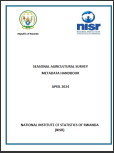
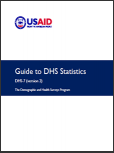
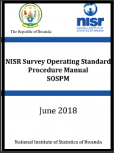

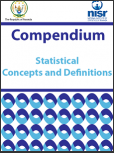
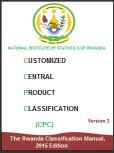
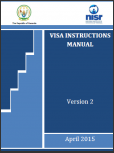
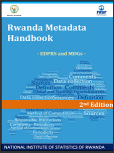
![[title]](https://www.statistics.gov.rw/sites/default/files/styles/pub_small_112x150_/public/publications/f6dafeae-3315-4353-8a8e-6e9ba7ce5fa8/NQAF.png?itok=yKcJv8zW)